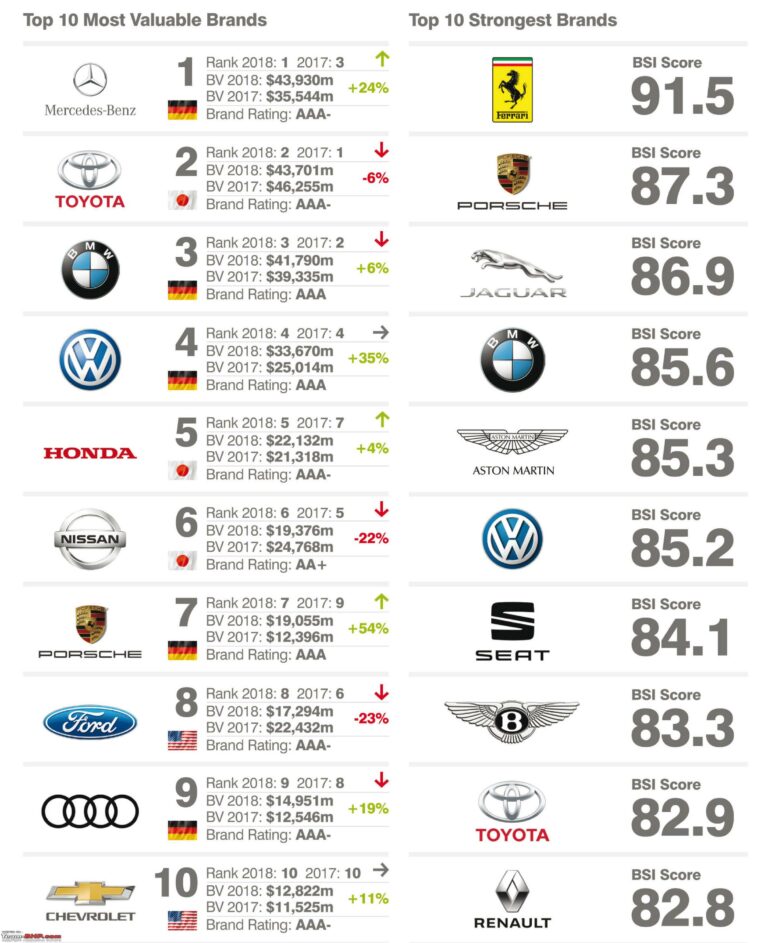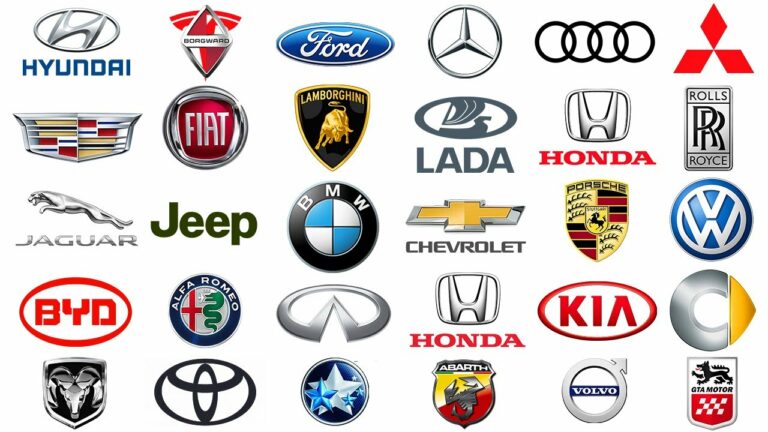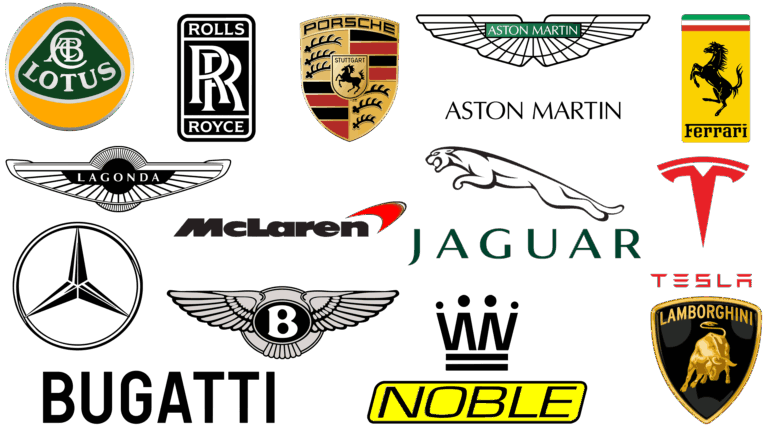I Want To Sell My Brand New Car: A Comprehensive Guide to Navigating the Unexpected Sale
I Want To Sell My Brand New Car: A Comprehensive Guide to Navigating the Unexpected Sale cars.truckstrend.com
Life has a funny way of throwing curveballs. One day, you’re driving off the lot in a gleaming, factory-fresh vehicle, the scent of new car leather filling the cabin. The next, circumstances shift, and you find yourself uttering the words, "I want to sell my brand new car." This isn’t just about selling a used car; it’s a unique situation fraught with specific challenges and opportunities.
Selling a brand new car – one that has only recently been purchased, perhaps driven only a few hundred or even a few thousand miles – requires a distinct strategy. Whether it’s due to an unexpected job relocation, a sudden financial shift, an expanding family, a case of buyer’s remorse, or simply finding a better deal on a different vehicle, the need to sell a practically new car is a reality for many. This guide aims to equip you with the knowledge, tools, and confidence to navigate this process, minimize your losses, and achieve the best possible outcome. Understanding the nuances of depreciation, market positioning, and transaction logistics will be key to transforming this unexpected challenge into a successful sale.
I Want To Sell My Brand New Car: A Comprehensive Guide to Navigating the Unexpected Sale
Why Are You Selling a Brand New Car? Understanding Your Motivation
Before diving into the mechanics of the sale, take a moment to understand your primary motivation. Your "why" can significantly influence your selling strategy and urgency.
- Financial Changes: Job loss, unexpected expenses, or simply realizing the car payment is too high. Urgency might be higher here, potentially leading to a quicker sale at a slightly lower price.
- Buyer’s Remorse: The car simply isn’t what you expected, or another model caught your eye. You might have more time to wait for the right buyer.
- Life Events: A new baby requiring more space, a cross-country move, or a change in commute (e.g., working from home permanently). These often dictate a firm timeline.
- Unexpected Gift or Inheritance: You received a car you don’t need or prefer. You likely have no financial attachment, allowing for a more relaxed approach.
- Better Opportunity: Another vehicle became available that better suits your needs or offers an irresistible deal.

Understanding your motivation helps set realistic expectations regarding price and timeline, which are crucial for a successful sale.
The Brand New Car Dilemma: Depreciation and Value Preservation
The most significant hurdle when selling a brand new car is depreciation. The moment a new car drives off the dealership lot, its value immediately drops, often by 10-20%. This initial hit is substantial and unavoidable. For a car that’s only a few months old, this effect is still very much in play.
- "New" vs. "Brand New": A car on the dealer lot is "new." Your car, even with 500 miles, is technically "used" in the eyes of the market, though its condition remains "brand new." Buyers will expect a discount compared to a dealer’s new car price.
- Factors Affecting Value:
- Mileage: Even minimal mileage (e.g., over 100-200 miles) can reduce its "new" appeal and justify a lower price to buyers.
- Condition: Any scratches, dents, interior stains, or modifications will significantly impact its value, especially for a car marketed as "brand new."
- Trim Level and Options: Higher trims and desirable factory options generally retain value better.
- Market Demand: Some makes and models hold their value better due to strong demand.
- Time Since Purchase: The longer you’ve owned it, the more it will have depreciated.


Your primary goal is to minimize this depreciation and preserve as much of your initial investment as possible. This means meticulous preparation and strategic pricing.
Preparing Your Brand New Car for Sale: Beyond a Wash and Wax
Presenting your car in pristine condition is paramount when selling a "brand new" vehicle. Buyers expect perfection.
- Professional Detailing: This isn’t just a car wash. A professional detailer will clean every nook and cranny, buff out minor surface imperfections, and ensure the interior looks and smells factory fresh. This investment often pays for itself in a higher selling price.
- Gather All Documentation:
- Title/Pink Slip: Crucial for transferring ownership. If you have a loan, the title will be held by the lender.
- Registration: Current registration proves ownership and legality.
- Original Purchase Agreement: Shows what you paid and any included warranties or features.
- Owner’s Manual: Presenting the original manual in good condition adds to the "new car" feel.
- Service Records: Even if you’ve only had one oil change, having the record is beneficial.
- Warranty Information: Highlight the remaining factory warranty – a huge selling point.
- All Keys/Fobs: Ensure all original keys and fobs are present and working.
- Address Financing/Loan (Crucial Step): If you have an outstanding loan, obtain a 10-day payoff quote from your lender. This figure is what you need to pay to get the title released. Be transparent with potential buyers about the loan and explain the process for title transfer once the loan is paid off. Some buyers might be hesitant, so having a clear plan is essential.
- High-Quality Photography and Video:
- Lighting: Shoot in good natural light, preferably on a slightly overcast day to avoid harsh shadows.
- Angles: Capture all exterior angles (front, back, sides, 3/4 shots).
- Interior: Showcase the dashboard, seats, trunk, and any unique features.
- Details: Close-ups of the odometer (showing low mileage), tires, engine bay (if clean), and premium features.
- Clean Background: A simple, uncluttered background (e.g., an empty driveway or park) helps the car stand out.
- Video Walkthrough: A short video tour can be incredibly effective, showing the car’s condition and features in motion.
Pricing Your Brand New Car: Strategies for Maximum Value
This is arguably the most challenging part. You need to price your car competitively enough to attract buyers looking for a "deal" on a nearly new car, but high enough to recover as much of your investment as possible.
Key Pricing Factors & Their Impact:
| Factor | Description | Impact on Price (Generally) |
|---|---|---|
| Original MSRP | Manufacturer’s Suggested Retail Price when new. | Starting point; your car will likely be below this. |
| Current Dealer Incentives | Promotions, rebates, or special financing offers on new models of your car. | Significantly lowers your car’s competitive edge if not considered. |
| Mileage | The exact odometer reading. | Lower mileage = higher value. Even 1,000 miles impacts "new" status. |
| Condition (Interior/Exterior) | Flawless, showroom-like condition is expected. Any minor imperfection reduces value. | Pristine condition is crucial for a "brand new" sale. |
| Trim Level & Features | Base model vs. fully loaded; premium sound, navigation, safety tech, etc. | Higher trims/desirable features command better prices. |
| Color (Exterior/Interior) | Popular colors sell faster and often for more. Unique/unpopular colors may hinder sale. | Can affect marketability and price, though less so than condition. |
| Remaining Warranty | How much of the original factory warranty is left. | A full factory warranty is a major selling point. |
| Market Demand | How popular is your specific make/model? | High demand can allow for a higher asking price. |
| Financing/Loan Status | Whether there’s an outstanding loan on the vehicle. | Impacts ease of sale/title transfer; doesn’t directly affect value, but complicates process. |
| Documentation | Availability of original title, service records, owner’s manual. | Builds trust and justifies value; missing docs can deter buyers. |
| Urgency of Sale | How quickly you need to sell. | High urgency often leads to accepting a lower price. |
Pricing Strategy:
- Research, Research, Research:
- Online Valuation Tools: Use Kelley Blue Book (KBB), Edmunds, and NADA Guides to get private party sale estimates. Pay close attention to "excellent" or "outstanding" condition values.
- Compare to New Cars: Look up the exact make, model, and trim of your car on local dealership websites. Note their advertised prices, and crucially, any current incentives or rebates they are offering on new versions of your car. Your price needs to be significantly below the dealer’s post-incentive new price to be attractive.
- Compare to Similar Used Cars: Search for similar models with low mileage (e.g., 5,000-15,000 miles) to understand the market for lightly used versions. Your car should be priced above these.
- The "Sweet Spot": Aim for a price that is noticeably lower than a brand new car from a dealership (factoring in incentives), but significantly higher than a typical used car with more miles. Your advantage is the "barely used" condition and full warranty.
- Be Transparent: Clearly state the mileage, purchase date, and why you are selling. Honesty builds trust.
- Set Your Minimum: Know the lowest price you’re willing to accept, factoring in your loan payoff (if applicable) and any emotional attachment.
Where to Sell Your Brand New Car: Exploring Your Options
Choosing the right sales channel depends on your priorities: maximum profit vs. convenience and speed.
- Private Sale (Direct to Consumer):
- Pros: Highest potential profit, you control the process.
- Cons: Most time-consuming, requires effort in marketing, dealing with inquiries, test drives, and paperwork. Security concerns.
- Platforms: AutoTrader, CarGurus, Facebook Marketplace, Craigslist, local classifieds.
- Trade-in at a Dealership:
- Pros: Extremely convenient, quick, no hassle with buyers or paperwork, potential tax savings (in some states, the trade-in value reduces the taxable amount of your new car purchase).
- Cons: Lowest return on your investment. Dealers need to make a profit and will offer wholesale value.
- Online Car Buying Services (e.g., Carvana, Vroom, We Buy Any Car):
- Pros: Very convenient, often quick cash offers, minimal hassle, they handle pickup and paperwork.
- Cons: Offers are generally lower than private sale, as these companies also need to make a profit.
- Consignment:
- Pros: A dealership or broker sells the car on your behalf, handling marketing, test drives, and paperwork. Can potentially get a better price than a direct trade-in.
- Cons: You pay a commission, and it can take time to sell. You don’t get immediate cash.
For a brand new car, a private sale often yields the best financial outcome due to the higher value you’re trying to retain. However, it demands the most effort.
The Selling Process: From Listing to Handover
Once you’ve decided on your price and platform, the real work begins.
- Craft Your Listing:
- Headline: "Brand New [Year] [Make] [Model] – Only [X] Miles! Full Warranty!"
- Description: Be detailed, honest, and compelling. Highlight:
- Low mileage and pristine condition.
- Remaining factory warranty.
- All original features and accessories.
- Reason for selling (briefly and honestly).
- No dealer fees, no waiting lists.
- Any premium options or packages.
- Photos/Video: Include all the high-quality visuals you prepared.
- Screening Buyers: Be wary of scams. Ask potential buyers for their full name and a phone number. Be cautious of offers to pay more than the asking price or using unconventional payment methods.
- Test Drives:
- Meet in a safe, public place (e.g., a police station parking lot).
- Always accompany the buyer on the test drive.
- Check their driver’s license and confirm they have insurance.
- Negotiation:
- Be prepared for negotiation. Most buyers will try to get a better deal.
- Know your absolute bottom line and stick to it.
- Highlight the value points: low mileage, perfect condition, warranty.
- Don’t be afraid to walk away from unreasonable offers.
- Paperwork:
- Bill of Sale: A legally binding document detailing the sale (make, model, VIN, odometer reading, sale price, buyer/seller info, date). Many states have templates online.
- Title Transfer: Sign the title over to the buyer. If you have a loan, the process is more complex: the buyer pays you (or your lender directly), and once the loan is paid off, the lender sends the title to the buyer (or you, to then sign over). Consider using an escrow service or meeting at your bank for larger transactions.
- Odometer Disclosure Statement: Required by law to verify mileage.
- Payment:
- Secure Methods Only: Cashier’s check (verify with the issuing bank before releasing the car), wire transfer, or cash for smaller amounts.
- Avoid: Personal checks, money orders, or payment apps like Venmo/PayPal for large sums, as they can be reversed or fraudulent.
- Post-Sale:
- Notify DMV/MVD: Inform your local Department of Motor Vehicles that you’ve sold the car to remove your liability.
- Cancel Insurance: Once the sale is complete, cancel your insurance policy on the vehicle.
- Remove Personal Items: Double-check the glove box, trunk, and under seats.
Potential Challenges and Solutions
- High Expectations vs. Depreciation Reality:
- Challenge: It’s hard to accept the immediate loss on a new car.
- Solution: Educate yourself on depreciation before listing. Price realistically based on market research, not just what you paid.
- Financing Hurdles:
- Challenge: Selling a car with an outstanding loan complicates title transfer.
- Solution: Get a 10-day payoff quote. Be transparent. For buyers, offer to meet at your bank to facilitate the transaction, where the bank can verify funds and process the payoff directly.
- Buyer Skepticism:
- Challenge: Buyers may wonder why you’re selling a "brand new" car.
- Solution: Be honest and provide a brief, clear reason (e.g., "job transfer," "need a larger vehicle"). Your transparency builds trust.
- Scams:
- Challenge: Fraudulent buyers or payment schemes.
- Solution: Be vigilant. Never accept personal checks. Always verify cashier’s checks with the issuing bank. Meet in public places. Trust your gut.
- Time Commitment:
- Challenge: Private sales take time and effort.
- Solution: Factor this into your decision. If time is critical, consider trade-in or online car buying services, even if it means a lower return.
Concluding Summary
Selling a brand new car is a unique endeavor that requires careful planning, realistic expectations, and a strategic approach. While the sting of immediate depreciation is inevitable, meticulous preparation, accurate pricing based on market research, and choosing the right sales channel can significantly minimize your losses and ensure a smooth transaction. By presenting your car in impeccable condition, providing complete documentation, and navigating the sales process with transparency and caution, you can successfully transition from an unexpected owner to a satisfied seller. Remember, it’s not just about selling a car; it’s about making a smart financial move under unforeseen circumstances.
Frequently Asked Questions (FAQ) about Selling a Brand New Car
Q1: How much depreciation should I expect on a brand new car that I’m selling after a few months?
A1: Expect significant immediate depreciation. A car typically loses 10-20% of its value the moment it leaves the dealership lot. After a few months, this initial hit will be compounded, though the rate slows down. Your goal is to recover as much as possible by highlighting its "nearly new" condition, low mileage, and remaining factory warranty.
Q2: Can I sell a car if I still have a loan on it? How does that work?
A2: Yes, you can. It’s common. You’ll need to get a "10-day payoff quote" from your lender. When you sell, the buyer’s funds will be used to pay off the loan directly to your lender. Once the loan is paid in full, your lender will release the title (often electronically or mail it to the buyer or you, who then signs it over). It’s often safest to conduct the transaction at your bank to facilitate the payoff and title transfer securely.
Q3: Is it better to sell privately or trade-in my brand new car?
A3: Generally, private sale offers the highest potential return because you avoid the dealer’s profit margin. However, it requires more time, effort, and dealing with buyers. Trading in is more convenient and faster, but you’ll receive a lower amount. Online car buying services offer a middle ground for convenience and price. For a brand new car where maximizing return is key, private sale is often preferred if you have the time.
Q4: How do I prove the car is "brand new" if I’ve driven it a bit?
A4: You can’t technically prove it’s "brand new" in the legal sense if it’s been registered and driven, as it’s now a "used" car in the eyes of the DMV. However, you emphasize its condition as "like new" or "pristine," highlighting the incredibly low mileage, the fact it still has its original factory warranty, and perfect condition. Provide the original purchase date and mileage to support your claim.
Q5: What paperwork do I need to sell my brand new car?
A5: You’ll need the car’s title (or information on your loan payoff), current registration, a bill of sale (detailing sale price, VIN, mileage, buyer/seller info), and an odometer disclosure statement. It’s also helpful to have the original purchase agreement, owner’s manual, and any service records.
Q6: How do I handle test drives safely?
A6: Always meet in a public, well-lit place, preferably during daylight hours. A busy shopping center parking lot or even a police station parking lot (some offer designated spots) is ideal. Always accompany the potential buyer on the test drive. Before they drive, check their valid driver’s license and ensure they have insurance. Never let them take the car alone.






